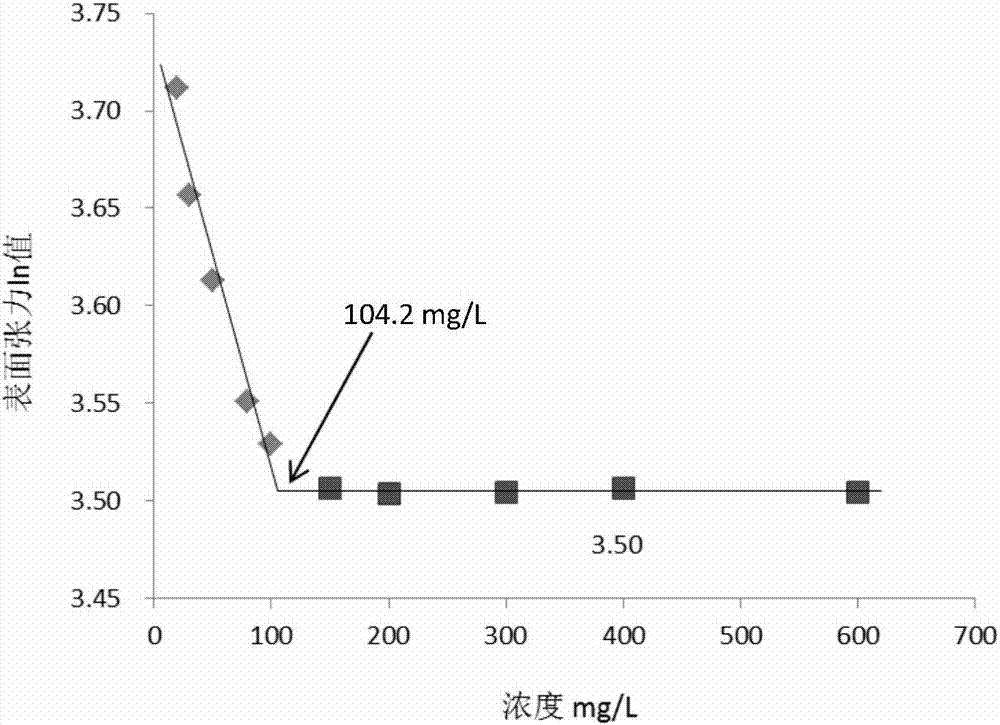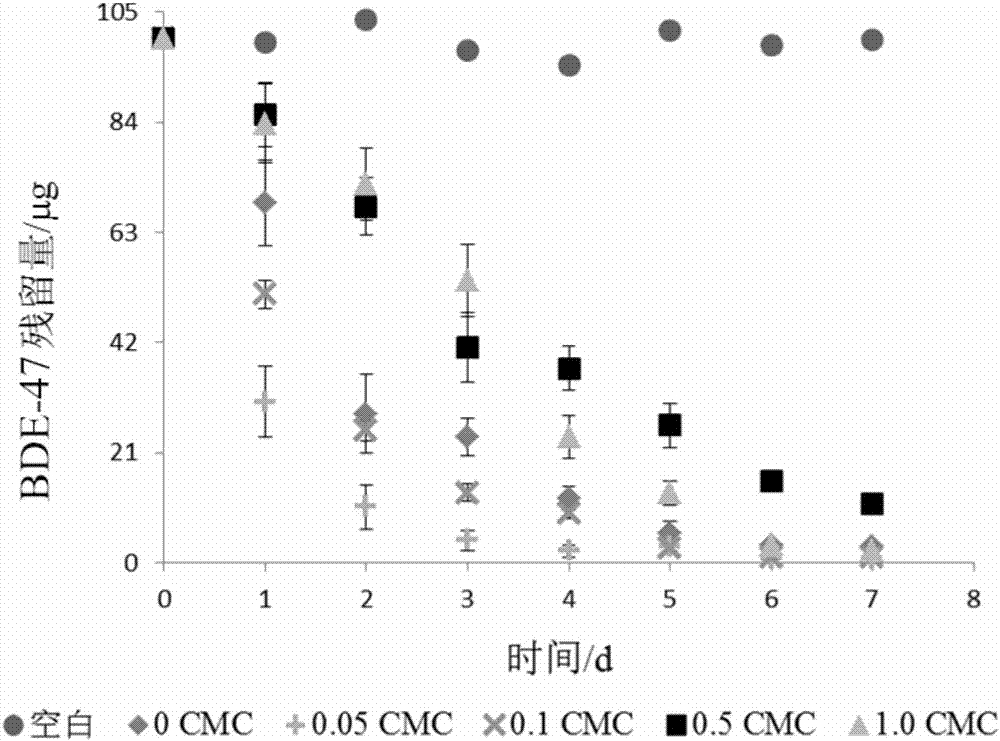Method for removing 2, 2, 4, 4-tetrabromodiphenyl ether in water
A tetrabromodiphenyl ether, water removal technology, applied in chemical instruments and methods, water pollutants, water treatment of special compounds, etc., can solve problems such as low degradation rate, achieve accelerated removal, good catalytic degradation effect, and good removal. effect of effect
- Summary
- Abstract
- Description
- Claims
- Application Information
AI Technical Summary
Problems solved by technology
Method used
Image
Examples
Embodiment 1
[0036] refer to figure 1 , the embodiment of the present application provides a method for removing 2,2,4,4-tetrabromodiphenyl ether in water, including:
[0037] adding Phanerochaete chrysosporium and rhamnolipid to water containing 2,2,4,4-tetrabromodiphenyl ether to obtain a mixed solution;
[0038] Shake the mixture to remove 2,2,4,4-tetrabromodiphenyl ether in the water.
[0039] Phanerochaete chrysosporium is a typical white-rot fungus. Studies have shown that Phanerochaete chrysosporium plays an important role in removing refractory organic matter in the environment. This is mainly because the bacteria can produce three important extracellular enzymes - lignin peroxidase (LiP), manganese peroxidase (MnP) and laccase (Lac). These three enzymes can effectively catalyze the ring-opening and further degradation of refractory organic matter in the environment. At the same time, the spherical Phanerochaete chrysosporium spheres in the shaking culture process have a certain ...
Embodiment 2
[0062] refer to Figure 8 , the embodiment of this application provides another method for removing BDE-47 in water.
[0063] The specific implementation steps are the same as in Example 1, and the difference from Example 1 is that in this example, 0.5 g of glucose is added to each conical flask, so that the concentration of glucose in each bottle reaches 10 g / L.
[0064] Depend on Figure 9 It can be seen that when adding glucose, it shows the same rule as that without adding glucose. Low concentration (0.05CMC, 0.1CMC) of RL can promote the removal rate of Phanerochaete chrysosporium to BDE-47, while high concentration (0.5CMC) CMC, the RL of 1.0CMC) has certain inhibitory effect to Phanerochaete chrysosporium to BDE-47, but has basically all reached complete removal to BDE-47; This can combine Figure 14 and Figure 15 Analysis showed that adding glucose was beneficial to the growth of Phanerochaete chrysosporium, and better cell morphology was more conducive to the remo...
PUM
 Login to View More
Login to View More Abstract
Description
Claims
Application Information
 Login to View More
Login to View More - R&D
- Intellectual Property
- Life Sciences
- Materials
- Tech Scout
- Unparalleled Data Quality
- Higher Quality Content
- 60% Fewer Hallucinations
Browse by: Latest US Patents, China's latest patents, Technical Efficacy Thesaurus, Application Domain, Technology Topic, Popular Technical Reports.
© 2025 PatSnap. All rights reserved.Legal|Privacy policy|Modern Slavery Act Transparency Statement|Sitemap|About US| Contact US: help@patsnap.com



